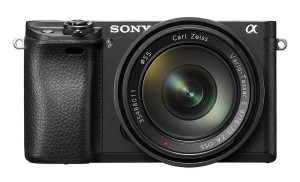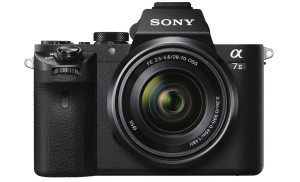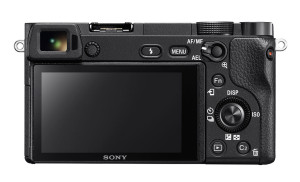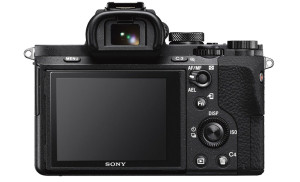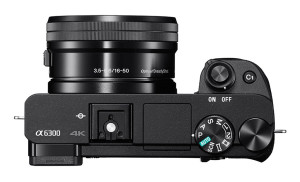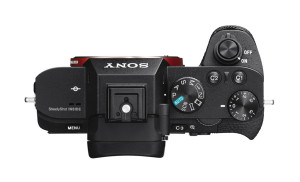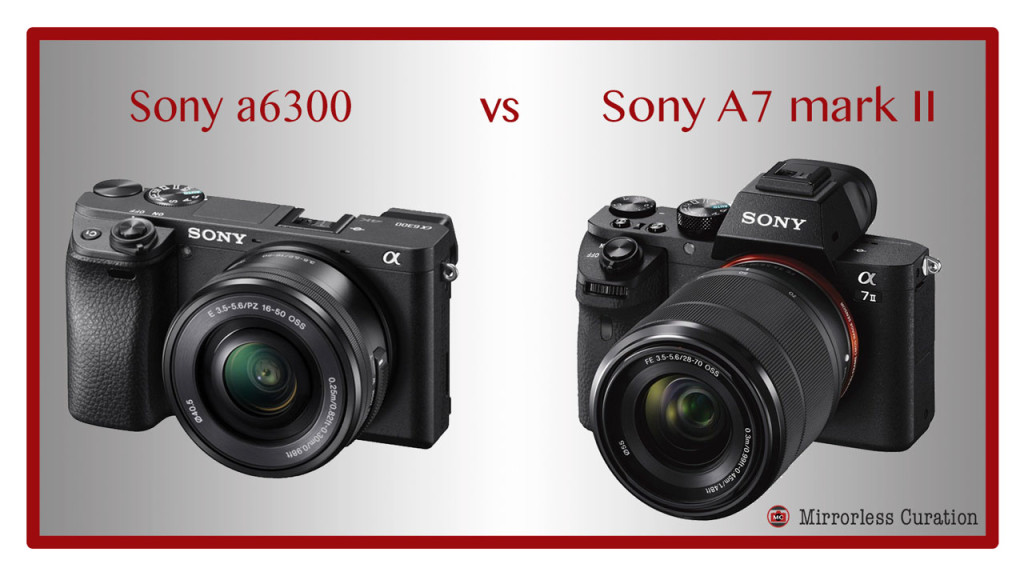
Sony is known for its tendency to release multiple camera bodies (perhaps too many sometimes) in a short period of time and this can often trigger doubt in the minds of potential users about which one to purchase.
The a6300 is the company’s newest flagship APS-C camera. Announced a few days ago, it brings relevant improvements to the autofocus and video capabilities, amongst other things. The price is also competitive, though more expensive than its predecessor the a6000. The A7 II on the other hand is the most affordable option out of the three mark II models from Sony and offers the advantage of a full-frame sensor and 5-axis stabilization.
Below you will find ten of the most interesting differences between the new Sony a6300 and the A7 II.
Ethics statement: The following list is based upon our experience with Sony cameras and official specifications. We were not asked to write anything about these cameras, nor were we provided any compensation of any kind. All opinions we express are our own. Within the article, there are affiliate links. If you buy something after clicking the link, we will receive a small commission. To know more about our ethics, you can visit our full disclosure page. Thank you!
1. APS-C vs 35mm format
- a6300: 24MP APS-C Exmor CMOS sensor
- A7 II: 24MP 35mm Exmor CMOS sensor
The a6300 may have a smaller sensor but it is brand new: the 24MP chip has copper wiring in its structure to collect light more efficiently and accelerate the readout speed. The BIONZ X processor has also been updated to improve resolution and noise rendering. The ISO sensitivity goes from 100 to 25600 with a push value of 51200.
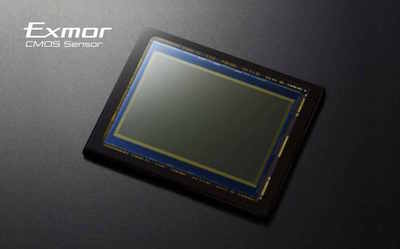
The A7 II has the same resolution (24MP) but the sensor is larger (35mm format, also referred to as full-frame). It is the same sensor used for the original Sony A7 with a few improvements that minimise the annoying ghost cyan flares. It can shoot from ISO 100 to 25600 with pull values of 50 and 64. ISO 51200 is available with the Multi NR mode which works well for static shots in JPG format.
2. Compressed vs uncompressed RAW
There have been many complaints about the compressed RAW files of Sony cameras since the original A7. Sony finally started to listen and slowly began releasing firmware updates to bring uncompressed RAW to its older cameras, while implementing the option on its latest models. Sadly this option is not available on the new a6300 nor any other APS-C camera for the time being. The camera can only shoot 14-bit compressed raw.
The A7 II on the other hand can record 14-bit RAW with the uncompressed option (firmware 2.0 needed). The difference between the two versions is not immediately visible and can make a difference only in certain situations. However if you plan to stress the RAW file a lot with heavy post-production, having the uncompressed option can help.
3. 5-axis stabilisation
The a6300 doesn’t feature in-body stabilisation of any sort. Instead, it relies on the optical stabilisation of compatible E-mount lenses. This is a little disappointing since many users were hoping to see the sensor shift technology implemented in the Sony APS-C segment as well. Note that not every E-mount lens features OSS which means that with some lenses (primes especially) you won’t have any kind of stabilisation at all.
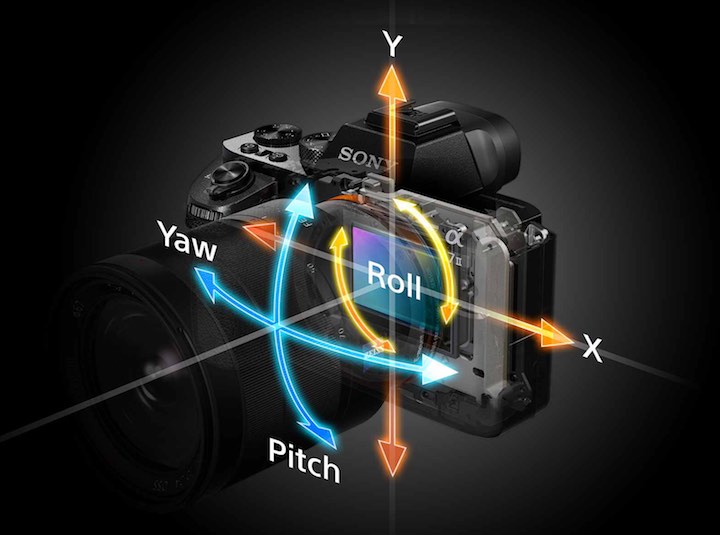
The A7 II was the first Sony camera to integrate 5-axis sensor shift technology. With OSS lenses the camera uses 3 axes on the sensor and the Pitch/Yaw of the optical stabilisation of the lens. With non-OSS lenses that can communicate the focus distance to the camera, the A7 mark II will use 5-axes on the sensor. With adapted lenses (manual focus) that lack electronic contacts, the camera will use 3 axes instead of 5. You can manually input the focal length used to get accurate results.
4. AF: 425 vs 117 phase detection points
According to Sony, the a6300’s 4D FOCUS™ hybrid autofocus system has been updated to deliver the world’s fastest AF acquisition time of only 0.05 seconds. The camera features the highest number of phase detection points seen on a mirrorless camera (425) plus 169 contrast detection points. The AF points basically cover the entire frame. The camera also features a new mode called High-density tracking AF that activates a large number points around a subject to track it better. Another new option is the use of autofocus with the focus magnifier activated (a feature that gets the most use in manual focus mode on the other Sony cameras).
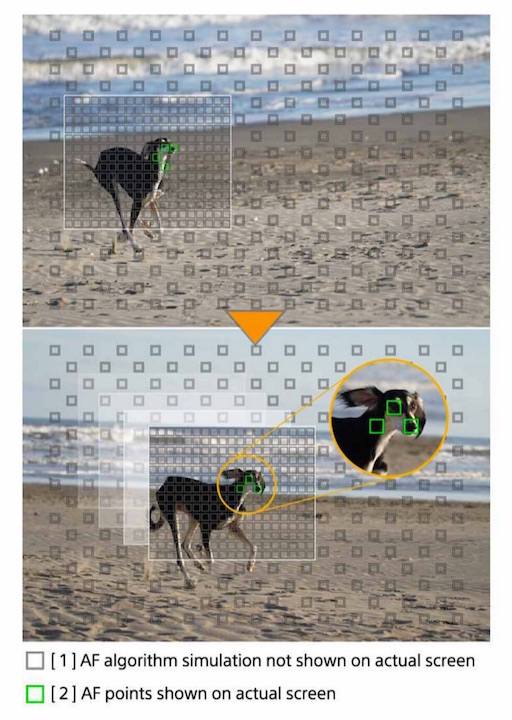
The A7 mark II also has a hybrid autofocus system but with 117 phase detection points and 25 contrast detection points. It features the same AF area options found on other Sony cameras (including the a6300) like Wide, Zone, Single, Flexible Spot and Lock-On AF. It lacks the new High Density AF as well as AF with focus magnification.
Because of the phase detection points, both cameras are compatible with the Sony A-mount lenses via the LA-EA3 adapter (requires firmware 2.0 for the A7 II).
5. Continuous shooting: 11fps vs 5fps
The a6300 can shoot up to 11fps in both Single and Continuous AF. At 8fps the camera has a special continuous live view mode that makes it easier to track a subject with minimal lag time. You can also select 6fps and 3fps speeds. According to the official specs, the buffer memory goes up to 55 frames (JPG) and 21 frames (RAW). These various specs make the a6300 more suitable for sports and action photography.
The A7 II can shoot at a maximum of 5fps in both S-AF and C-AF. The buffer capabilities are similar to those of the a6300 but we have to take into account that the speed is half that of the APS-C model: the A7 mark II can shoot continuously for approximately 50 frames in JPG and 20 frames in RAW.
Both cameras have WB and AE bracketing options. The a6300 can go as far as 9 frames with 1.0 EV increments or 5 frames with 3.0 Ev increments. The A7 II can do a maximum of 3.0 EV with 5 frames.
6. 4K video vs Full HD video
The a6300 is the first APS-C camera from Sony capable of recording 4K video. It can shoot at a maximum of 30fps with the XAVC S codec (100mbps). Furthermore the camera can record with full pixel readout without pixel binning in the Super 35mm format. It uses 20MP from the sensor which equals 6K of resolution before down-sampling to 4K size. In Full HD the camera can record up to 120fps for better slow motion footage.
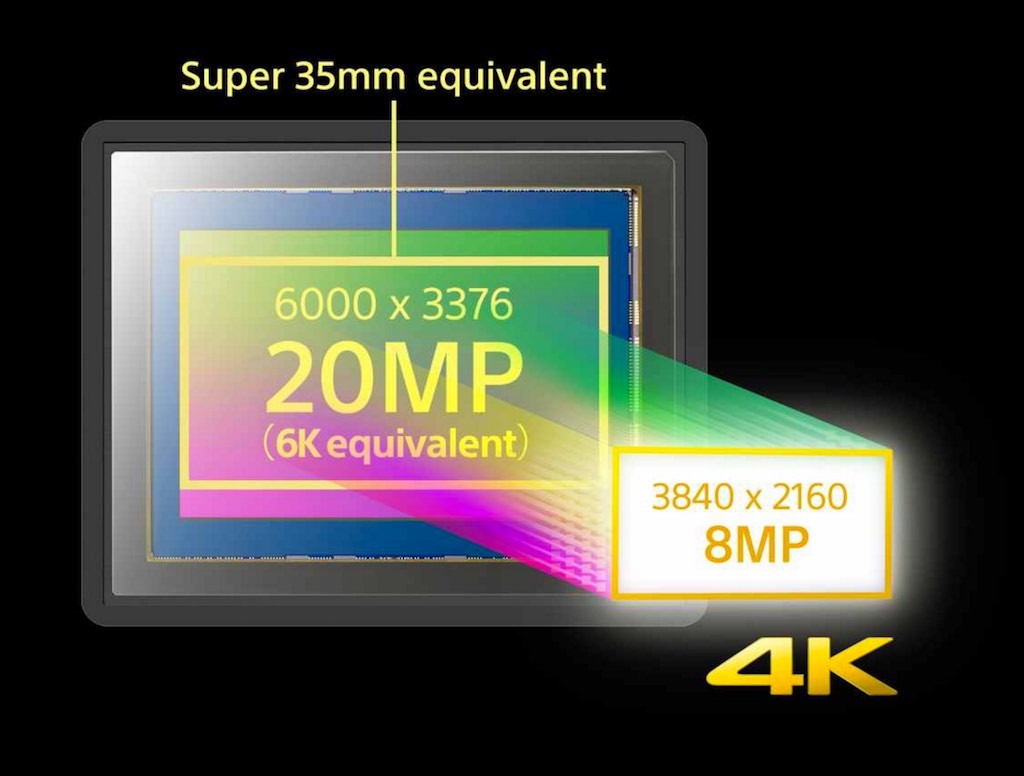
The A7 II doesn’t have 4K capabilities and can record in Full HD at a maximum of 60fps. It uses the XAVC S codec as well (50mbps).
Both cameras include total manual control, and audio input (microphone) and output (headphones). Also included on both is the S-Log2 gamma curve but the a6300 also gets the new S-log3 option.
7. Electronic viewfinder
The first obvious difference is that the a6300 EVF is located on the left side of the camera (rangefinder style) while the A7 II has an SLR like design with the EVF at the centre that mimics a pentaprism.
The a6300 has a smaller viewfinder (0.39in) with 2.4 million dots and 0.7x magnification. There is also a new mode at 120fps that makes the live view clearer and smoother. As mentioned above, the a6300 supports uninterrupted live-view continuous shooting with the EVF and LCD at up to 8 fps. Though we’ve yet to test it, it should simulate the real-time shooting experience that comes with using an OVF while retaining all the benefits of an EVF.
The A7 II has a larger EVF (0.5in) with 2.4M dots as well. The magnification factor is slightly bigger at 0.71x.
8. Electronic / silent shutter
The a6300 integrates a silent shooting mode thanks to the electronic shutter. It is available even in continuous shooting up to 3fps with AF/AE tracking. There is also the first curtain electronic option.
The A7 II lacks a silent shutter mode and only has the electronic first curtain option.
9. Design and ergonomics
- a6300: 120 (W) x 66.9 (H) x 48.8 (D) mm, 404g
- A7 II: 126.9 (W) x 95.7 (H) x 59.7 (D) mm, 599g
The a6300 is lighter and smaller (especially concerning the height) in comparison to the A7 II. Both cameras have a robust magnesium alloy body and lens mount structure and are dust and moisture resistant (but not completely weather sealed). Both cameras feature a built-in grip on the front. They feature a tilting LCD screen on the rear but lack touch sensitive capabilities.
10. Ease of use and customization
The a6300 has fewer dials, with the main mode and exposure dials situated on top. The A7 II also has an exposure compensation dial and two exposure dials on the front and rear of the body.
The a6300 has 9 customisable buttons across the body. There are two custom settings (Memory Recall 1 and 2) on the Mode dial. The A7 II has an extra Fn button and the same MR 1&2 on the mode dial. Both cameras feature the Fn quick Menu with 12 customisable functions.
Both cameras include a hot-shoe mount on top. The a6300 has the benefit of a built-in flash and the max sync is 1/160s. The A7 II lacks a built-in flash and its fastest sync speed is 1/250s.
Other articles like this one:
- Sony a6300 vs Olympus Pen F – All the key differences
- 10 Key Differences Between the Sony a6000 and a6300
- Olympus Pen F vs. Panasonic GX8 – All the key differences
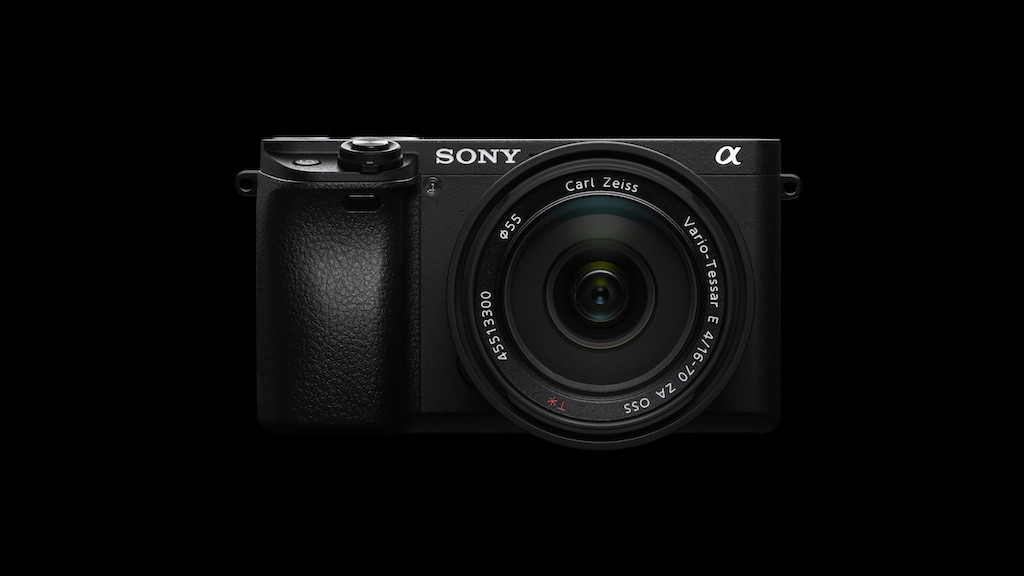
As usual, only a complete comparison between these two cameras can determine which is better (if we can ever come to such a definitive conclusion). Because of its recent announcement, the a6300 incorporates more functions and improvements that for certain applications place it on a similar level to the A7r II (AF, 4k) and A7s II (4k video). However in terms of price the A7 II remains its natural competitor in the full-frame arena. Its 35mm sensor is also more likely to satisfy those in search of more shallow depth of field.
The Sony a6300’s autofocus capabilities make it the best choice for advanced amateurs and professionals interested in shooting fast action with a Sony mirrorless camera, at least on paper. Its lighter and smaller body is also a good fit for the compact APS-C lenses. The A7 II on the other hand is aimed more at an enthusiast audience and can work for a wide range of genres. It is also a better choice if you plan to use manual focus lenses, including some old SLR and rangefinder glass because of the sensor format and stabilisation.
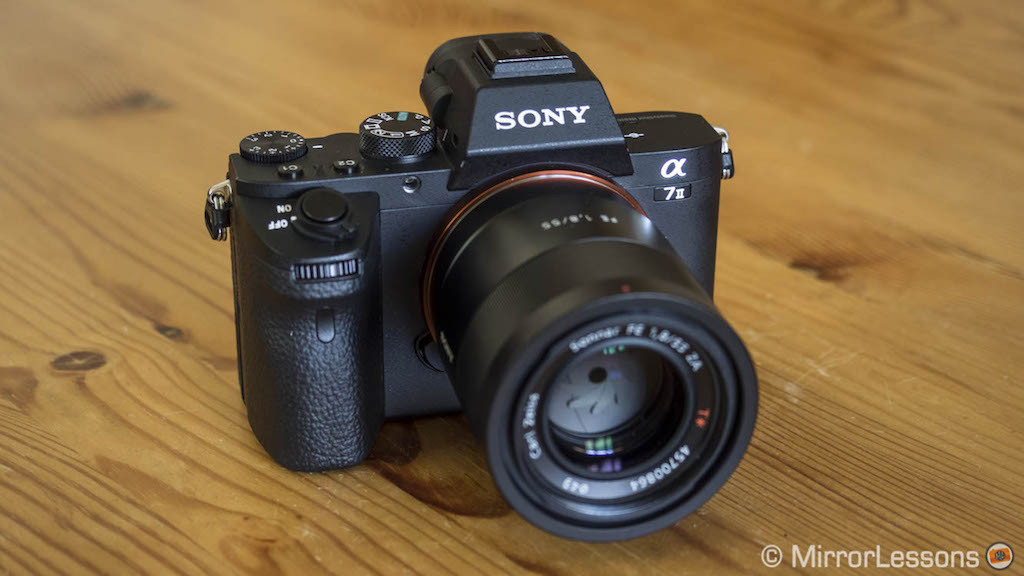
The a6300 has a price tag of $1000 / €1250 while the A7 II can be found at the retail price of $1700 / €1800. Note that since the A7 II is more than one year old, it is also easier to find good second-hand deals.
If you’d like to find out more about these two cameras, you can read our full news article about the a6300 or check out the recommended reviews below.
- a6300 hands-on review by Gordon Laing
- a6300 video preview by The Camera Store
- a6300 vs a6000 comparison
- Our A7 II review on Mirrorlessons
- A7 II review by Nasim Mansurov

